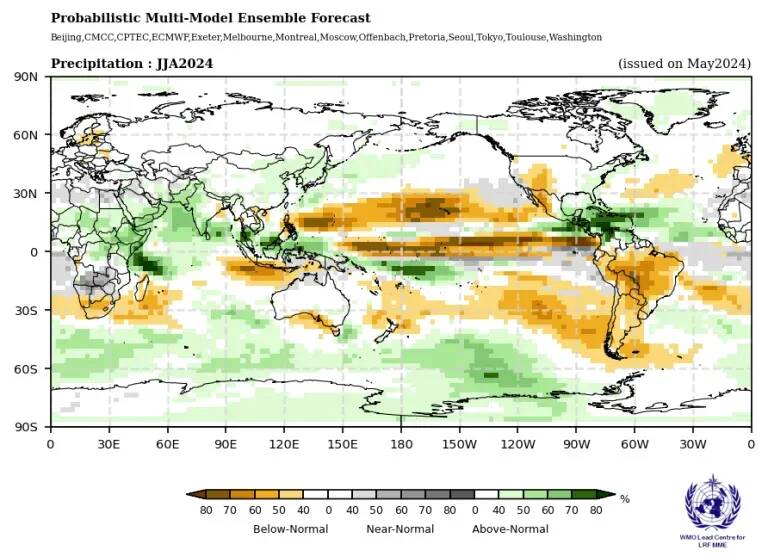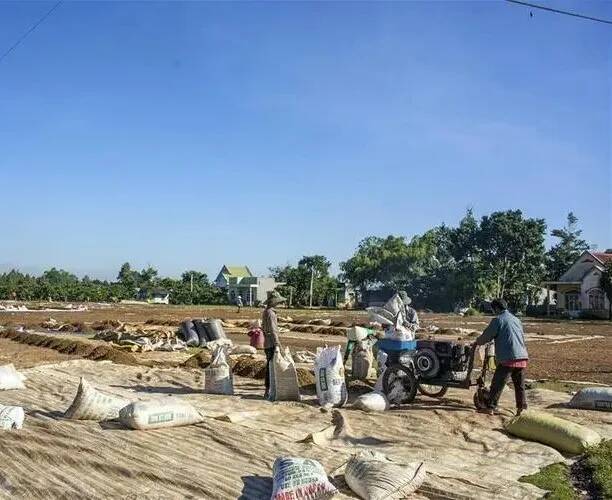Many countries around the world experience high temperature weather! Coffee production declines in many producing countries
Recently, many media around the world have reported that many countries around the world have encountered hot and hot weather after the beginning of summer. According to the Global seasonal Climate Renewal (GSCU), sea surface temperatures are generally higher than normal in all areas except the eastern Pacific near the equator, and the situation will continue.

As a result, temperatures in almost all land areas will be higher than normal, so high temperatures affect the agricultural industry in many parts of the world, including the coffee industry.
In Asia, Vietnam has reported its worst drought in nearly a decade this year, dealing a heavy blow to the coffee industry, causing irreparable damage to coffee trees and severely reducing production. Even if some coffee farmers try their best to stabilize their production, the international market and Vietnam are still not optimistic about the forecast harvest for the next quarter, and believe that international coffee prices will continue to rise.
According to local weather reports in Vietnam, it began to rain in Vietnam's coffee-growing areas in May, but the rainfall until June was still lower than the historical average, and the national temperature was higher than before.
In addition, due to reduced production and increased domestic coffee consumption, Vietnam exported a total of 1170033 bags of coffee (60 kg / bag) in June 2024, down 11.5% from May this year, far below the government's estimate of 1.42 million bags, according to the Vietnamese Ministry of Agriculture and Rural Development. According to Vietnam's Ministry of Agriculture and Rural Development, the current stock of coffee beans in Vietnam's domestic market is almost zero.

As for Indonesia, since the country has been suffering from a series of natural disasters such as floods, landslides and volcanic eruptions this year, although the weather has improved somewhat, coffee producing areas are still affected by the drought in 2023 and the recovery is slow. Production has rebounded slightly, but domestic consumption has increased and exports available have decreased.
In the Americas, Brazil, the world's largest coffee producer and exporter, is also affected by high temperatures and drought, resulting in lower-than-expected coffee production and small beans, so local coffee institutions say that some coffee farms actually produce less than 30% of what the market expects, so Brazilian coffee production may be 10-15% less than expected.
In addition, another American country, Mexico, reported severe dry weather and insufficient rainfall. According to local media reports, about 80% of the coffee acreage in Mexico has been affected, and it is expected that the yield will be reduced by up to 50% in 2024.
In Chiapas, which is mainly grown in Mexico, Arabica and Robusta are grown at the same time, but today's drought has damaged both coffee production. It is currently in the growing season of Mexican coffee berries, but due to the lack of Rain Water and drought, the berries do not grow significantly, which may affect the yield of the next season.
However, there is good news in Colombia. According to the Colombian National Association of Coffee growers (FNC), Colombian coffee production in June 2024 totaled 1.17 million bags, an increase of 23 per cent over the same period last year and 4.6 per cent over May of the same year. In addition, in the first half of this year, Colombia's coffee bean production reached 5.82 million bags, an increase of 16% over the same period last year and the best record in three years.
Although coffee production in Colombia has increased, coffee prices have risen again as other major coffee-producing countries have reported reduced production. Recently, the monthly average price index of June coffee released by the international coffee organization ICO is 226.83 cents / lb, up 8.9% from May, and the spot prices of all types of coffee have risen to varying degrees. It is believed that the coming La Nina weather may aggravate the weather change, and the price will still rise.
Important Notice :
前街咖啡 FrontStreet Coffee has moved to new addredd:
FrontStreet Coffee Address: 315,Donghua East Road,GuangZhou
Tel:020 38364473
- Prev

Collecting money for more than 10 consecutive years! Starbucks apologizes and refunds
▲ Click to pay attention| A few days ago, Starbucks in Japan issued an announcement saying that since 2014, the prices of some products in offline stores have been higher than their pricing, resulting in overcharging consumers who purchase these products. A price difference. According to an official announcement, Starbucks across Japan
- Next

Introduction to Java Island, Indonesia's coffee producing area
Asia is the largest continent and the most populous among the seven continents. The terrain is undulating, with a high middle and low around. Mountains, plateaus and hills account for more than 3/4 of the total area. Moreover, the Asian continent spans the three belts of cold, warm and hot, and has complex and diverse climate types. It can be said that many countries in Asia are suitable for growing coffee, including "ten thousand"
Related
- Customers have "changed" Manner's new products! Shop assistant: Please don't mess around!
- Remove sockets in customer areas at Starbucks stores?! Netizen: I won't go if I really tear it down
- What is the difference between the taste steps of sun-dried coffee and washed coffee? Why is sun-cured coffee sweeter and washed coffee sour?
- The recipe for salty grapefruit dirty is revealed! Coffee Festival salty grapefruit dirty coffee making materials parameters ratio milk share!
- How about the flavor of Sunlight 74158 at Sidamo Banshaha Mathieu Processing Factory in Ethiopia? 74158 Share the proportion of coffee brewing parameters!
- What effect does Italian American coffee with filter paper have? Will coffee taste better if it is put on filter paper at the bottom of the powder bowl?
- What is the color difference in coffee beans? What are the characteristics of honey processed coffee beans? Why are the anaerobically treated coffee beans uneven in color?
- How does novice Xiaobai quickly get started and make coffee? Newbies learn to make coffee by hand and share the specific steps and process process!
- Costa tea has a shelf life of 100 years?! Expert: Unable to verify
- It's a huge uproar! American milk addition was rejected by Manner employees?!

